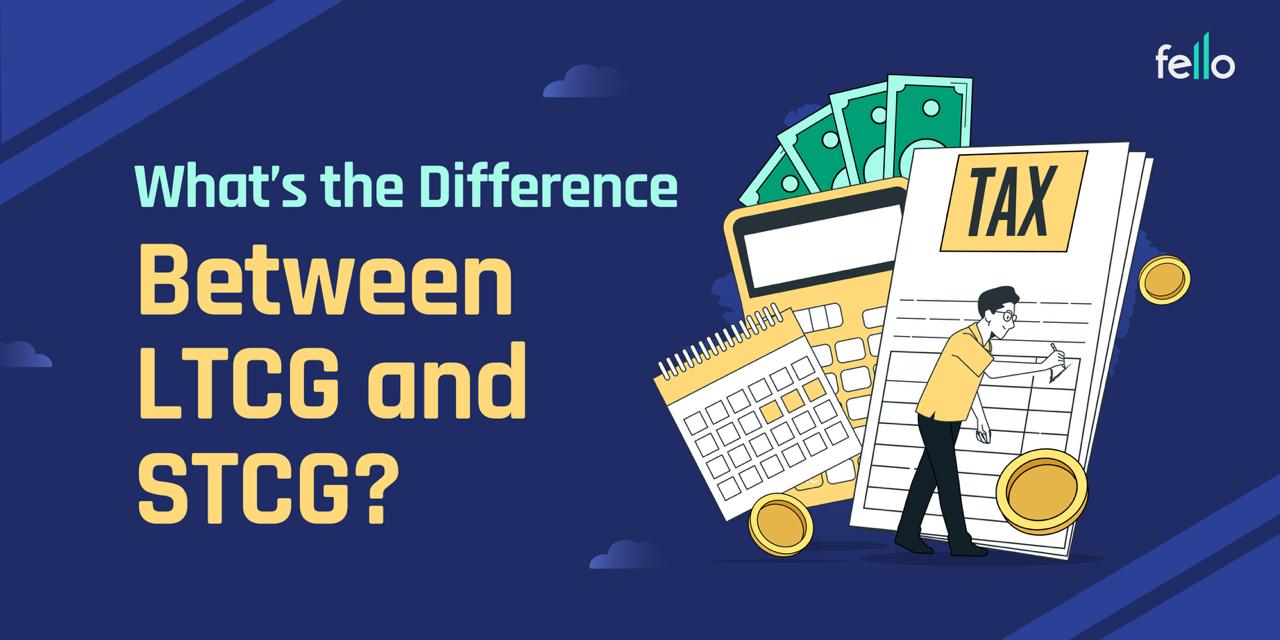Ever found yourself celebrating a big win on an investment, only to have a nagging thought about taxes creep into your mind? You’re not alone. The world of investments, while exciting, often comes with its own set of complex terms, especially when it comes to taxation. Among the most crucial for investors to understand are Long Term Capital Gains (LTCG) and Short Term Capital Gains (STCG). These aren’t just jargon; they’re key distinctions that can significantly impact the tax you owe on your profits. So, what exactly sets them apart, and why should you care? Let’s dive in and demystify the intricacies of capital gains tax.
At its core, capital gains tax is levied on the profit an investor realizes from the sale of a non-inventory asset. This includes assets like stocks, bonds, real estate, and even mutual funds. The ‘gain’ is simply the difference between the selling price and the original purchase price of the asset. However, the type of capital gain, long-term or short-term, fundamentally alters how it’s taxed. The determining factor is the holding period of the asset, which is the duration for which you owned it before selling. This seemingly simple distinction is where LTCG and STCG diverge.
Understanding Short Term Capital Gains (STCG)
Short Term Capital Gains (STCG) arise when you sell a capital asset that you’ve held for a relatively short period. While the exact definition of “short-term” can vary slightly depending on the asset class and country’s tax laws, generally, for most listed shares and equity-oriented mutual funds in India, an asset held for 12 months or less is considered short-term. For other assets like debt mutual funds, unlisted shares, and real estate, this period can extend to 36 months or less.
Key Characteristics of STCG:
- Holding Period: Typically 12 months or less for equity, or 36 months or less for other assets.
- Taxation: STCG are generally taxed at a higher rate, often aligning with your individual income tax slab. In India, for instance, STCG on equity shares sold through a recognized stock exchange are typically taxed at a flat rate of 15% (plus cess and surcharge, if applicable) under Section 111A of the Income Tax Act. For other assets, the gains are added to your total income and taxed as per your applicable income tax slab. This means someone in the 30% tax bracket would pay 30% tax on their short-term gains from non-equity assets.
- Impact: The higher tax rate on STCG often discourages frequent trading or “day trading” as a primary investment strategy, as a significant portion of the profits can be eaten up by taxes.
Demystifying Long Term Capital Gains (LTCG)
In contrast, Long Term Capital Gains (LTCG) are profits from the sale of capital assets held for a longer duration. Following the same general guidelines, for listed shares and equity-oriented mutual funds in India, an asset held for more than 12 months qualifies for LTCG. For other assets, this period is more than 36 months.
Key Characteristics of LTCG:
- Holding Period: Typically more than 12 months for equity, or more than 36 months for other assets.
- Taxation: LTCG are generally taxed at more favourable rates, as governments often aim to incentivize long-term investing. In India, for example, LTCG on equity shares or equity-oriented mutual funds exceeding ₹1 lakh in a financial year are taxed at a flat rate of 10% (plus cess and surcharge, if applicable) under Section 112A, without indexation benefit. For other assets, LTCG are taxed at 20% with the benefit of indexation. Indexation adjusts the purchase price for inflation, thereby reducing the taxable gain. This is a significant advantage for long-term investors.
- Impact: The lower tax rates and indexation benefits associated with LTCG encourage investors to hold assets for extended periods, aligning with wealth creation strategies and market stability.
Side-by-Side Comparison: LTCG vs. STCG
To make the differences even clearer, let’s look at a comparative table:
| Feature | Short Term Capital Gains (STCG) | Long Term Capital Gains (LTCG) |
| Holding Period | 12 months or less (equity); 36 months or less (other assets) | More than 12 months (equity); More than 36 months (other assets) |
| Tax Rate (India – indicative) | 15% (equity, Sec 111A); As per income slab (other assets) | 10% over ₹1 Lakh (equity, Sec 112A); 20% with indexation (other) |
| Indexation Benefit | No | Yes (for non-equity assets) |
| Primary Goal | Short-term profit, potentially speculative trading | Long-term wealth creation, value investing |
| Tax Impact | Higher tax burden, less attractive for frequent trading | Lower tax burden, encourages patient investing |
Conclusion
Understanding these distinctions is not just about avoiding penalties; it’s about optimising your investment strategy. By being aware of the holding periods and their tax implications, you can make informed decisions about when to buy and sell, potentially saving a substantial amount in taxes and maximizing your net returns. Whether you’re a seasoned investor or just starting out, having a firm grasp of Long Term Capital Gains (LTCG) and Short Term Capital Gains (STCG) is fundamental to navigating the financial landscape successfully.

